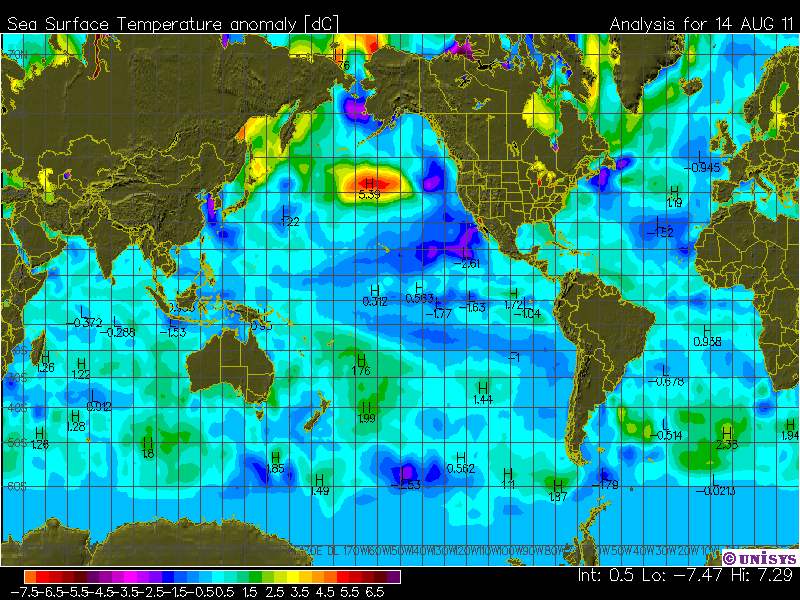Global warming: Rising sea temps displacing fish
Posted on August 15, 2011 by Bob BerwynClimate change is starting to affect distribution patterns of commercially important fish.
Researchers trace significant shift in mackerel patterns
By Summit VoiceSUMMIT COUNTY — Cyclical changes in Atlantic weather patterns and a general warming of seawater the East Coast of the U.S. is changing the distribution patterns of Atlantic mackerel, important for commercial and recreational fisheries in the region.
Never mind all the cold water in the Pacific or the other side of the Atlantic.
http://weather.unisys.com/surface/sst_anom.gif



The fish off the Grand Banks are headed south to get out of the cold water.
This is a well known long term weather pattern and it even has been named. Maybe Bob just does not know what he is talking about!
I love this one. Maine fishermen have known for over a hundred years that there is a regular movement of sea temperatures up and down the Eastern Coast of the US. In Maine, lobsters like the midrange that shows up every 35 years or so. And, lobster catches are good for those midrange periods.
During the high and low peaks lobsters are more scarce. During cold times the true lobster, Homarus, can be found down near Hatteras but then it runs into the rock lobster, Panulurus and they compete.
Andy WeissDC said: “The fish off the Grand Banks are headed south to get out of the cold water.”
Actually, the fish like the cold, they use less calories and spend more time and energy growing. For every 10 deg C of water temperature rise, metabolic processes go up three fold. In the tropics, the fish spend most of their time finding calories just to maintain, not to grow. Everybody’s hungry! That’s why there are so many poisonous organisms down there, they have to resort to chemical warfare to survive. This is not the case in colder waters.